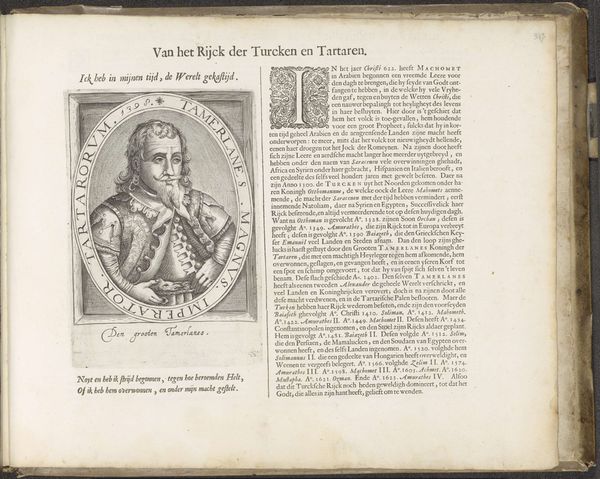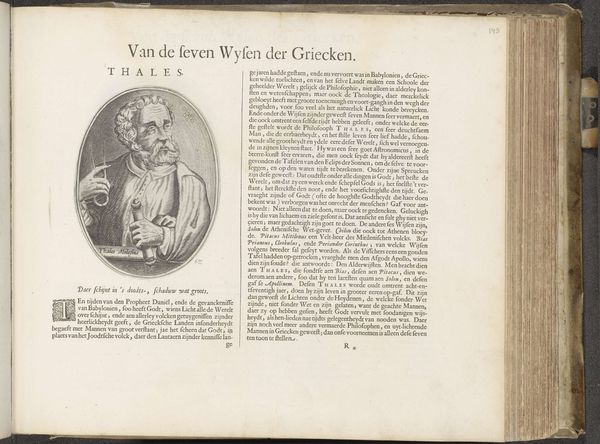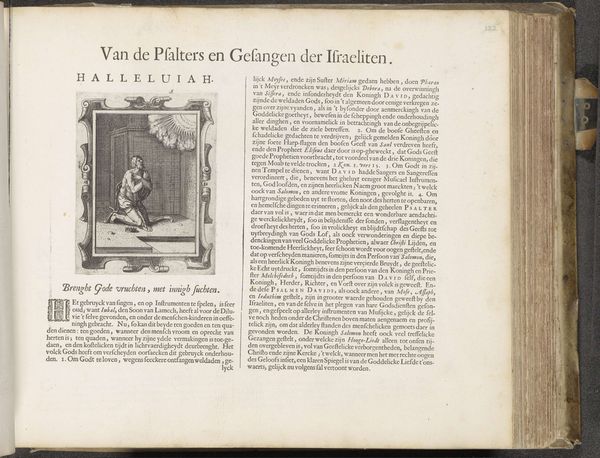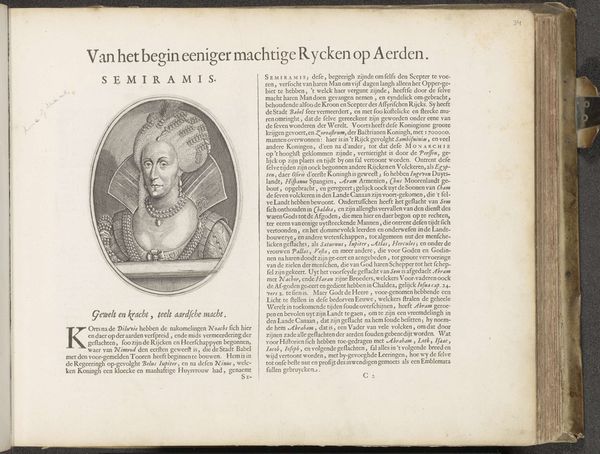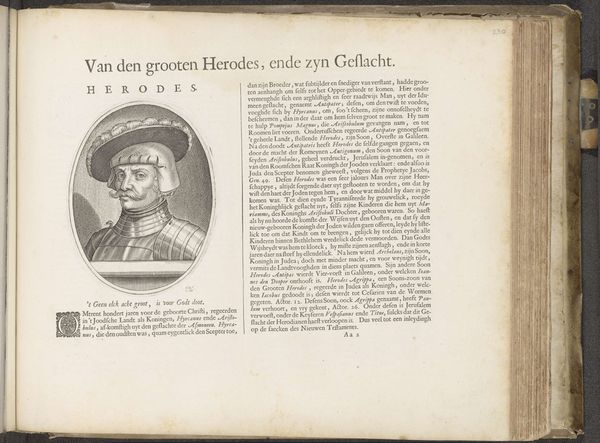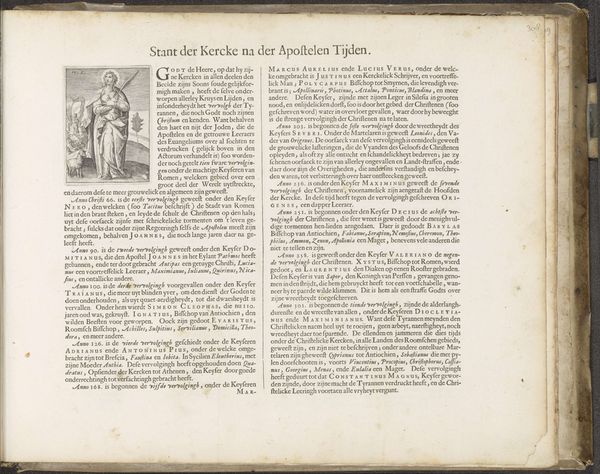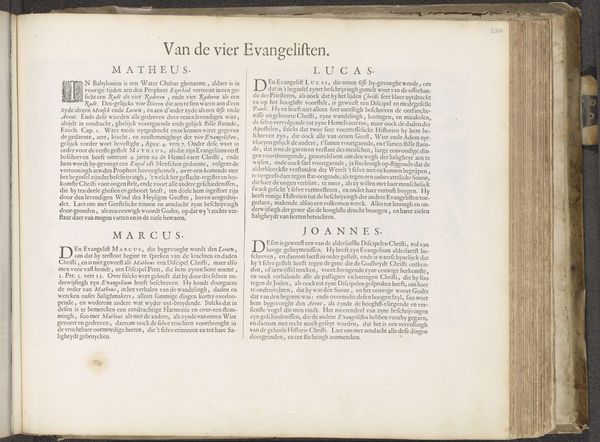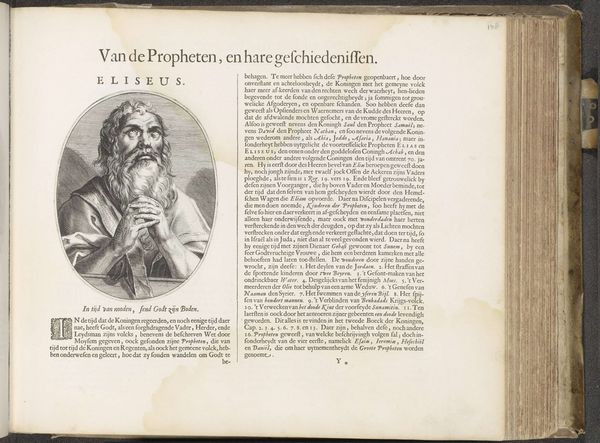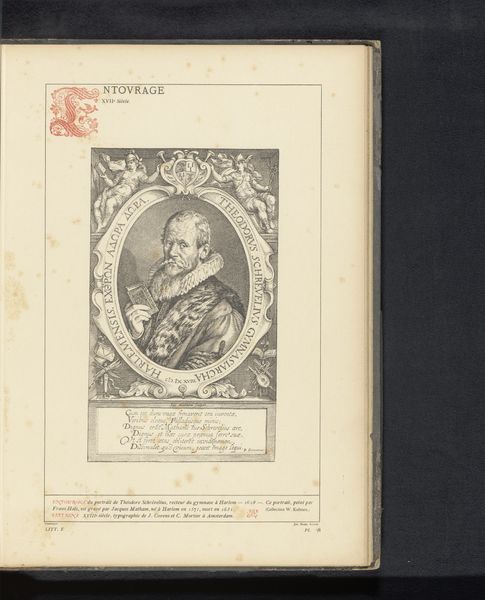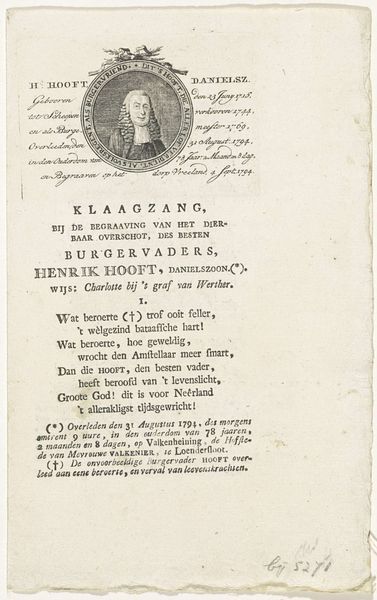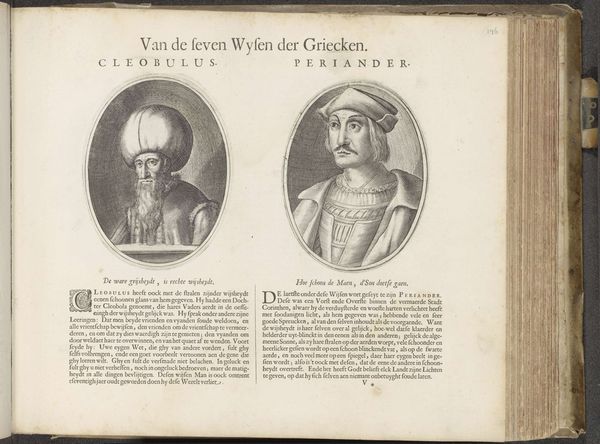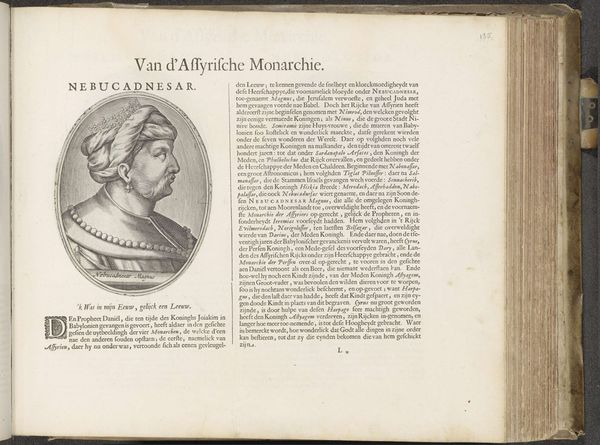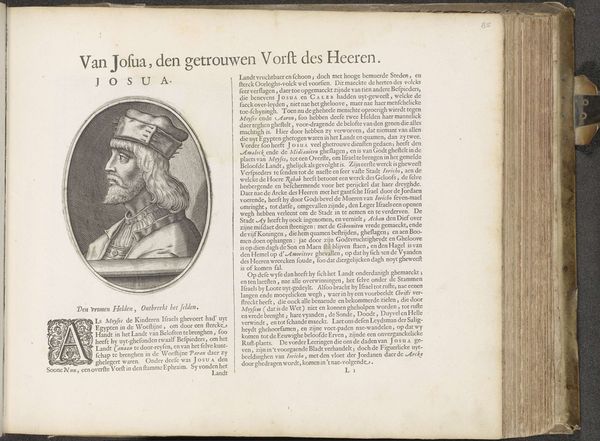
print, engraving
#
portrait
# print
#
ancient-egyptian-art
#
text
#
coloured pencil
#
ancient-mediterranean
#
history-painting
#
engraving
#
historical font
Dimensions: height 135 mm, width 101 mm, height 294 mm, width 370 mm
Copyright: Rijks Museum: Open Domain
Curator: So, looking at this engraving from after 1610, titled "Portret van een farao"—or "Portrait of a Pharaoh"—currently residing at the Rijksmuseum, what springs to mind for you? Editor: Well, initially, it strikes me as surprisingly human. I expected something grander, perhaps more stylized like you often see with depictions of ancient rulers. Instead, there’s this rather… ordinary-looking man. Sort of pensive, gazing out like he’s contemplating taxes or something. Curator: Indeed. Although labelled as a pharaoh, this is no Ancient Egyptian ruler but rather, a rendering reflecting 17th-century European perceptions of what a pharaoh *should* look like. Think of it as historical fantasy meeting portraiture. Editor: Ah, that context shifts my perspective completely. The clothing and that vaguely medieval crown certainly don't scream "ancient Egypt" now that you mention it. So it's less about historical accuracy, and more about projecting contemporary ideals onto the past? Curator: Precisely! And considering it’s an engraving, think about the role printmaking played in disseminating these sometimes skewed, often romanticized, views of history. It would have shaped public imagination on Egypt. Also, consider the text surrounding it... it serves as evidence for those early narratives, shaping the conception of what Egypt was at this historical moment. Editor: Fascinating. It's a visual and textual construction, not a record. So in essence, this "pharaoh" isn’t really a person but rather a product of a very specific time and place in European history looking towards a version of the past. Curator: Exactly! It serves as a lens into both Egypt and early modern Europe’s complex relationship with the ancient world and, dare I say, the construction of their own identities through these imaginings of long-lost rulers. Editor: Well, I will never look at "historical" portraiture the same way. It's a reminder of how much of what we understand of the past is actually just a reflection of the present, dressed up in old clothes. Curator: Yes, and how crucial it is to acknowledge those layers. Art like this serves as both image and idea – history and fantasy all at once.
Comments
No comments
Be the first to comment and join the conversation on the ultimate creative platform.
